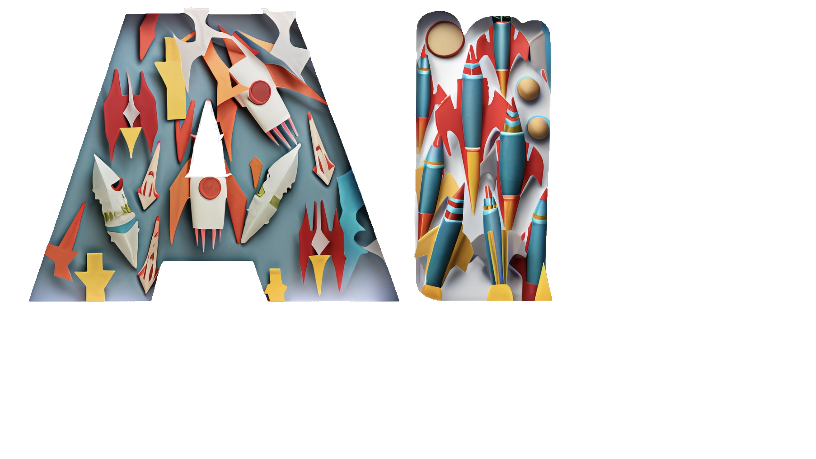Theoretical Reflections: Re-examining Joseph Beuys’ “Everyone is an Artist” in the AI Era

Theoretical Reflections: Re-examining Joseph Beuys’ “Everyone is an Artist” in the AI Era
Recently, following feedback from my tutorial and my own reflections on curatorial theory, I’ve been diving deeper into the theoretical underpinnings of my curatorial project—particularly Joseph Beuys’ famous assertion that “Everyone is an artist.” To fully engage with this idea in the context of my AI-focused exhibition, I’ve revisited key texts, critical analyses, and relevant contemporary scholarship.
Joseph Beuys: Art, Society, and Transformation
Initially, I understood Beuys’ statement quite literally: as a claim that anyone can create art. However, further reading and reflection have deepened my understanding significantly. According to Beuys (1979), the idea of “Everyone is an artist” does not simply democratize artistic production in terms of skill or aesthetics. Rather, Beuys proposed art as a fundamentally social and transformative act. He saw creativity as a universal capability to reshape society through participation, cooperation, and collective imagination.
Claire Bishop (2012), in Artificial Hells: Participatory Art and the Politics of Spectatorship, provides valuable insights into understanding how participatory practices could help unpack Beuys’ statement. Bishop argues that the value of participatory art lies not merely in aesthetics but in its capacity to foster social engagement and critical dialogue. Her perspective suggests a broader interpretation of Beuys’ idea: that art is inherently a collaborative and socially embedded practice.
As I’ve been developing my curatorial project, I’ve felt the need to move beyond surface-level interpretations of Joseph Beuys’ famous claim: “Everyone is an artist.” In earlier phases, I understood this line as a radical call to democratize artistic practice. But through recent research and tutorial feedback, I’ve come to realize that Beuys’ vision was far more socially ambitious and complex.
Beuys’ notion of the “social sculpture” redefined art not as the production of aesthetic objects, but as a transformative process embedded in all aspects of life. Everyone, in his view, has the creative potential to shape society—whether through teaching, politics, activism, or collaborative imagination. As Beuys put it: “Art is now the only evolutionary-revolutionary power.”
In the context of my exhibition, which explores AI-generated art by students with formal training in art (from ECA and China Academy of Art), Beuys’ ideas offer a crucial framework. My aim is not simply to ask who can make “better” AI art, but to question what artistic education truly means when technology levels the playing field.
This is where curatorial theory intersects with Beuys’ philosophy. If everyone can generate compelling images using Midjourney or Stable Diffusion, then what role does intention, context, or reflective critique play? Is creativity just prompt-writing now? Or does art education still cultivate something deeper—such as aesthetic literacy, visual culture awareness, or socio-political sensitivity?
I’ve also found resonance in more recent thinkers, like Johanna Zylinska, whose book AI Art: Machine Visions and Warped Dreams (2020) challenges the myth of AI autonomy. Zylinska argues that humans still frame, feed, and interpret these systems—and thus, our role in meaning-making hasn’t disappeared. This directly connects to my project: although all artworks in my show are made with AI, each one reflects different levels of artistic decision-making, conceptual clarity, and visual strategy shaped by the artists’ training.
Finally, the concept of Promptism—as seen in public events like Prompt Battle—has helped me understand prompt writing as a form of creative authorship. A good prompt can act like a poetic instruction or even a micro-manifesto. This gives curators and educators new tools for thinking about language, literacy, and creativity in AI-influenced environments.
Through all of this, my project takes Beuys’ quote seriously—but not literally. Rather than assuming AI has made everyone an artist, I’m asking: Has it made us reconsider what kind of artist we each want to be? And what role art education still plays in shaping that path?
References:
- Beuys, Joseph. “Introduction,” in Energy Plan for the Western Man: Joseph Beuys in America. New York: Four Walls Eight Windows, 1979.
- Bishop, Claire. Artificial Hells: Participatory Art and the Politics of Spectatorship. London: Verso Books, 2012.
- Zylinska, Johanna. AI Art: Machine Visions and Warped Dreams. London: Open Humanities Press, 2020.
- Barbican Centre, “AI: More Than Human” Exhibition, 2019, London. https://www.barbican.org.uk
- Artechouse, Refik Anadol’s “Machine Hallucinations,” 2019, New York. https://www.artechouse.com
This deeper theoretical reflection has significantly strengthened my understanding of the potential role of AI within contemporary curatorial practices and its implications for art education.



